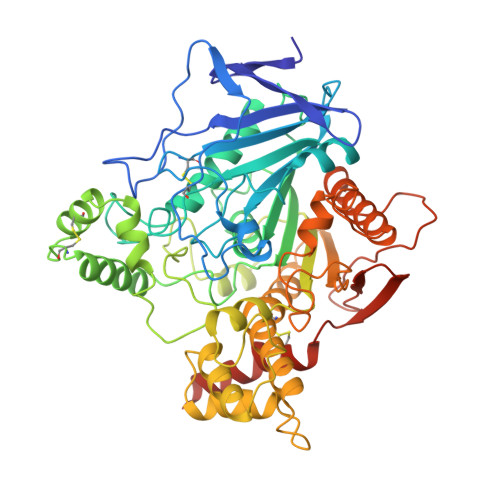A Structure-Based Design Approach to the Development of Novel, Reversible Ache Inhibitors
Doucet-Personeni, C., Bentley, P.D., Fletcher, R.J., Kinkaid, A., Kryger, G., Pirard, B., Taylor, A., Taylor, R., Taylor, J., Viner, R., Silman, I., Sussman, J.L., Greenblatt, H.M., Lewis, T.L.(2001) J Med Chem 44: 3203
- PubMed: 11563919
- DOI: https://doi.org/10.1021/jm010826r
- Primary Citation of Related Structures:
1HBJ - PubMed Abstract:
Chimeras of tacrine and m-(N,N,N-Trimethylammonio)trifluoroacetophenone (1) were designed as novel, reversible inhibitors of acetylcholinesterase. On the basis of the X-ray structure of the apoenzyme, a molecular modeling study determined the favored attachment positions on the 4-aminoquinoline ring (position 3 and the 4-amino nitrogen) and the favored lengths of a polymethylene link between the two moieties (respectively 5-6 and 4-5 sp(3) atoms). Seven compounds matching these criteria were synthesized, and their inhibitory potencies were determined to be in the low nanomolar range. Activity data for close analogues lacking some of the postulated key features showed that our predictions were correct. In addition, a subsequent crystal structure of acetylcholinesterase complexed with the most active compound 27 was in good agreement with our model. The design strategy is therefore validated and can now be developed further.
- Syngenta, Jealott's Hill Research Station, Bracknell, Berkshire RG42 6EY, U.K.
Organizational Affiliation:





















